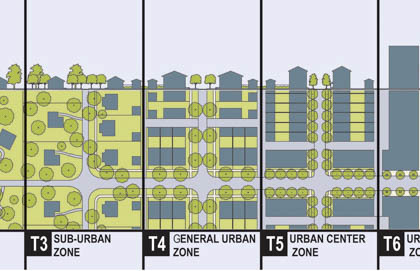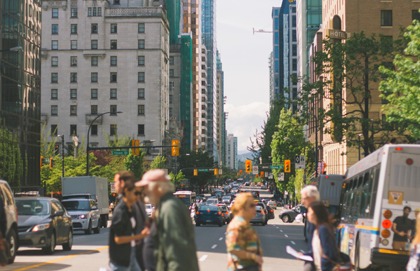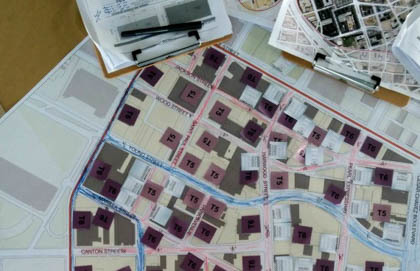I recently had the privilege of attending the Congress for the New Urbanism 23 in Dallas, Texas, along with over a thousand other planners, architects, community organizers, urban designers, developers, city-oriented creatives.
Within the dynamic matrix of talks, conversations, presentations, workshops and collaborative sessions, I had opted to be part of a practically oriented 9-5 working session called the “Form-Based Code Workshop.” Led by members from three different new urbanism firms, the workshop consisted of participants being divided into several teams who then spent the day applying the SmartCode to an area of downtown Dallas centered on the Dallas Farmers Market.
The workshop
Our time together was a mix of orienting talks by leading practitioners, guided tours of the area we would be zoning by those same practitioners, and then mapping exercises at tables in the farmers market. As teams we spent time debating, puzzling, and sketching how the SmartCode could guide a strongly human-centered design structure that would support long-term vitality for this part of Dallas over the coming years and decades. At the end of the day, a developer and some citizens heard each team’s ideas for balancing the complex mix of forms that thriving downtowns require.
The most critical aspect of this process is finding the most vital and loved areas of Dallas (or other local context) and then using what has already proven successful to calibrate a design framework that can be applied to areas that require support or are in line for new or re-development. Our goal was to reflect what Sandy Sorlein had reminded of us in our homework webinar prior to the session: “attend to the character of habitat for humans.”
The Code Rather than designing zoning and development rules that focus on use, form-based development attends to the physical structure and design DNA of what has already worked and then develops a process of applying those forms to ongoing development. This may seem like a hair-splitting difference, but it isn’t. Rather than predicting residential or commercial demand 20 or 30 years in the future, form-based codes attend to the density, layout, and qualities of a given space and move negotiations of particular use closer to the street level. This ensures a container adequate to the level of density (built and human) while providing flexibility on what goes in said container. For those familiar with subsidiarity concerns (decisions should be made closest to the level of impact), SmartCode embodies a kind of spatial and design subsidiarity that has potential for improved community design. This is an example of how law and design function as good development DNA.
Rather than designing zoning and development rules that focus on use, form-based development attends to the physical structure and design DNA of what has already worked and then develops a process of applying those forms to ongoing development. This may seem like a hair-splitting difference, but it isn’t. Rather than predicting residential or commercial demand 20 or 30 years in the future, form-based codes attend to the density, layout, and qualities of a given space and move negotiations of particular use closer to the street level. This ensures a container adequate to the level of density (built and human) while providing flexibility on what goes in said container. For those familiar with subsidiarity concerns (decisions should be made closest to the level of impact), SmartCode embodies a kind of spatial and design subsidiarity that has potential for improved community design. This is an example of how law and design function as good development DNA.
The term “code” derives from “caudex,” which was simultaneously the trunk of a tree and set of laws. It is one of several terms clustering around the idea of power being resident in a sacred tree at the center of a traditional village. A code, then, is etymologically and functionally the trunk around which a settlement arranges itself.- Patrick Pinnell – from SmartCode Version 9.2 workbook (http://transect.org/codes.html)
To be continued: you can read Part II of this article, with more on the choices, the outcomes, and the needs, by clicking here.








